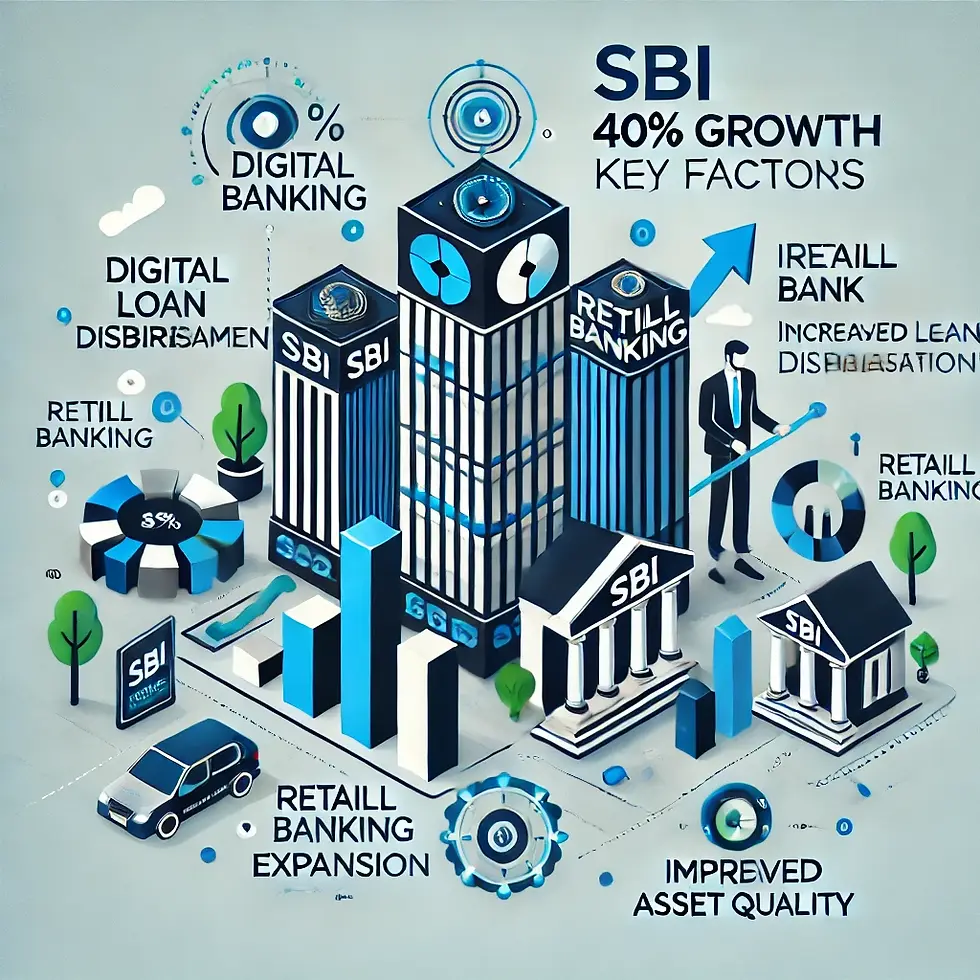How do SBI's FY25 results compare with other major Indian banks!
- nvshah0610
- Jul 29
- 3 min read

In comparing State Bank of India’s (SBI) FY25 results with other major Indian banks, several key points emerge:
Profitability and Net Profit:
SBI reported a strong full-year net profit of ₹70,901 crore for FY25, marking a 16.1% year-on-year increase.
However, SBI’s standalone net profit in Q4 FY25 declined by 10% year-over-year to ₹18,643 crore, impacted by rising employee costs.
In contrast, private banks like ICICI Bank posted higher quarterly profits and growth rates, with ICICI's Q4 net profit rising 18% YoY to ₹12,630 crore. Similarly, HDFC Bank reported a 6.7% YoY increase in net profit in Q4 to ₹17,616 crore.
Public sector banks like Punjab National Bank (PNB) showed strong quarterly growth, with a 51.7% jump in Q4 net profit to ₹4,567 crore, though on a smaller base than SBI123.
Net Interest Margin (NIM):
SBI’s domestic NIM declined to 3.15% in Q4 FY25 from 3.47% a year ago.
Private banks had higher margins: ICICI Bank’s NIM stood at 4.41%, Kotak Mahindra Bank at 4.97%, and HDFC Bank’s NIM remained steady around 3.4%-3.5%.
SBI’s margin pressure contrasts with such stronger margin profiles in private banks, indicating room for improvement in profitability metrics135.
Credit and Deposit Growth:
Asset Quality:
SBI improved asset quality with net NPA ratios improving to around 0.47% in Q4 FY25.
Private banks continued to maintain low NPA ratios: ICICI Bank at 0.39%, Kotak Mahindra Bank at 0.31%, and HDFC Bank similarly maintaining good asset quality.
Public sector banks overall showed improving asset quality trends in FY25123.
Cost and Efficiency:
SBI faced rising employee costs by 10.1% in Q4 FY25, which pressured profitability.
Private sector banks managed operating costs more efficiently, reflected in stronger net profit growth and margins.
SBI’s operating expense stability and cost controls have improved profitability but still lag relative to some private peers13.
Summary Comparison Table (Key Metrics Q4 FY25 / FY25):
Metric | SBI | ICICI Bank | HDFC Bank | PNB |
Net Profit (Q4 FY25) | ₹18,643 Cr (↓10%) | ₹12,630 Cr (↑18%) | ₹17,616 Cr (↑6.7%) | ₹4,567 Cr (↑51.7%) |
Net Profit (FY25) | ₹70,901 Cr (↑16%) | ₹47,226 Cr (↑15.5%) | ₹67,347 Cr (↑10.7%) | - |
Net Interest Margin | 3.15% (Q4) | 4.41% (Q4) | ~3.4%-3.5% (Q4) | - |
Advances Growth | ~12% YoY | 13.3% YoY | 5.4% YoY | ~15% YoY |
Deposits Growth | 9.5% YoY | 14% YoY | 14.1% YoY | 7.2% YoY |
Net NPA Ratio | ~0.47% | 0.39% | Low (not specified) | 0.4% |
Employee Cost Growth | +10.1% (Q4) | Lower growth pressure | Lower | - |
Interpretation:
SBI remains the largest and a highly profitable public sector bank, showing strong annual profit growth and steady credit expansion.
Private banks such as ICICI and HDFC exhibit stronger quarterly profit growth, higher net interest margins, and better cost efficiency. This reflects their sharper focus on cost management and higher-yielding loan portfolios.
Some public sector banks like PNB have shown impressive Q4 profit growth, but still on a smaller scale compared to SBI.
While SBI's asset quality is strong and improving, it faces margin pressure and rising operating costs relative to private peers, indicating potential areas for operational improvement.
Overall, SBI delivered robust full-year results but lags private banks in certain operational efficiency and margin metrics during Q4 FY25, although it maintains leadership in scale, deposit base, and credit growth among public sector banks.
This nuanced comparison highlights the competitive dynamics between India’s banking giants in FY25.
Soures:Reuters





Comments